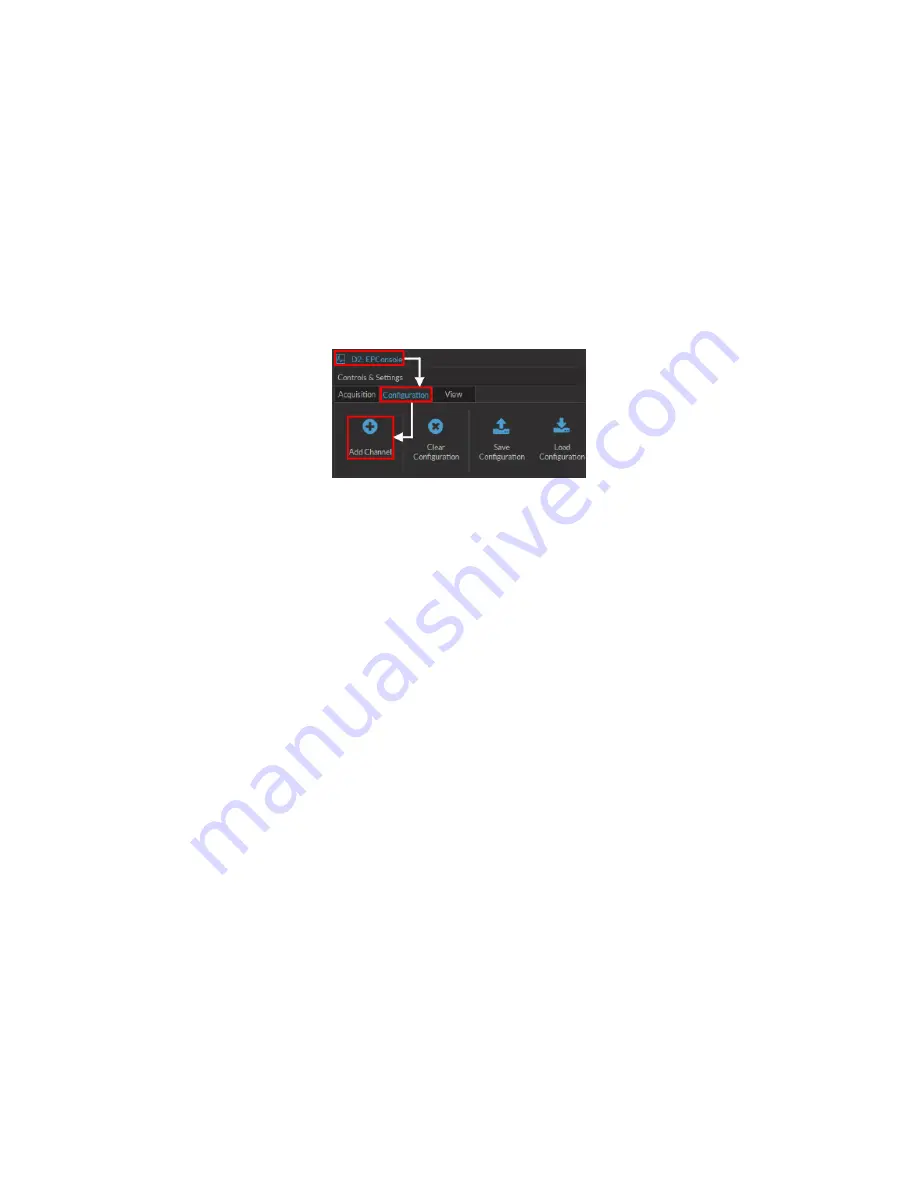
2. Connect the console to the
12 VDC power supply
and turn the console
ON
.
THIS MUST BE DONE BEFORE
CONNECTING THE CONSOLE TO THE COMPUTER.
3. Connect the
Fi-Wi Headstage Charger
to the
USB Docking Port
using the USB-A (male/female) cable. Install the
headstage(s) onto the charging port.
4. Connect the console to the computer using the
USB-A/USB-B Cable
.
5. When the console is
OFF
, disconnect the
USB-A/USB-B Cable
before turning it back
ON
. Once the console is
ON
,
reconnect the cable.
2.1.2 Software setup
The following section details how to set up a measurement sequence using
Doric Neuroscience Studio
. Further detail for
each software feature is found in section
Figure 2.3:
Antenna Channel Configuration
1. With the console properly connected, open the
Doric Neuroscience Studio
. Once open, the electrophysiology con-
sole tab (Fig.
) will appear. Select the
Configuration
tab in the
Control & Settings
box, then select the
Add
configuration
button to open the
Channel configuration
window.
2. In the
Channel configuration
window (Fig.
), there are 2
Antenna
channels available. When one is selected,
the channel can be configured.
• The
Acquisition settings
box (Fig.
-1) is used to define how electrophysiological data is acquired. This
includes triggering options, as well as frequency filters.
• The
LED Options
box (Fig.
-2) is used to define the cannula LED current and the current baseline.
• The
Headstage settings
box (Fig.
-3) is used to define the pulse sequence emitted by the cannula LED.
While the standard pulse sequence is square, the
Smoothing Edges
function can allow specific rise/fall times.
3. Once your channel is configured, it can be controlled using the
Acquisition
control tab and the tools in the
Acqui-
sition view
.
• Once the headstage is charged and off the charging station, click the
Pair/Unpair
button (Fig.
-1), which
will connect it to the console. Its
Unique ID
will be indicated right above the button. The wifi
Channel
is
shown beside the
Unpair
button; if multiple headstages are in use, each much have a different channel sepa-
rated by at least 10 increments.
• Once the headstage is paired, the LED sequence is triggered by the beginning of an acquisition sequence.
The sequence progression can be seen on the
LED Trigger
window (Fig.
• Once everything is ready, the
Live/Record
buttons (Fig.
-3) will start the acquisition sequence.
• With the acquisition sequence started, recorded signal will be shown in the
Graphs Box
(Fig.
Chapter 2. Operations Guide
9
























